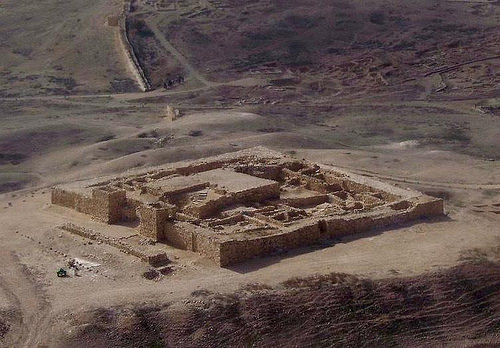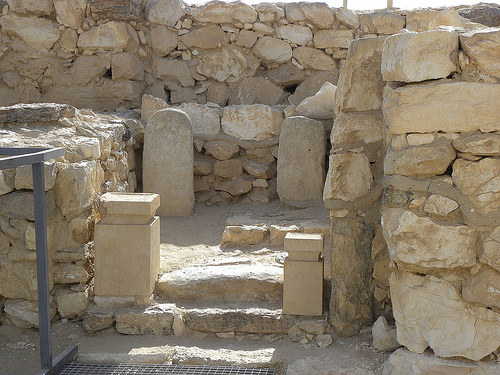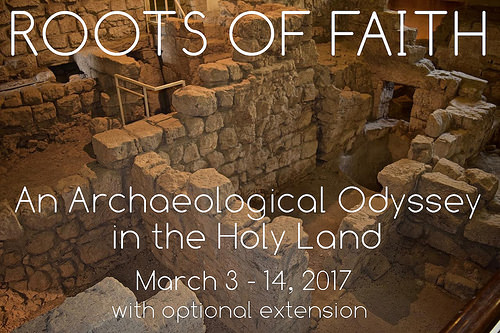
A team of scholars and scientists have analyzed Hebrew inscriptions dated to about 600 BCE, and suggest results that indicate a high degree of literacy in ancient Hebrew writing among officials of the military and administrative apparatus of the kingdom of Judah before the fall of Jerusalem at the hands of Nebuchadnezzar in 586 BCE.
Shira Faigenbaum-Golovin, Arie Shaus and colleagues of Tel Aviv University conducted an analysis* of 16 ink inscriptions in Hebrew on ancient ceramic shards (otherwise known as ‘ostraca‘) which were previously excavated from the desert fortress of Arad in southern Judah and dated to around 600 BCE. Their analysis was based on data acquired through new computerized image processing and document analysis techniques, including machine learning algorithms. The study concluded that the inscriptions were created by at least six different authors, individuals whose position or rank ranged from a top military commander down to a person who was a subordinate of the Arad fortress warehouse. More specifically, the inscriptions were connected to one unnamed Judahite military commander; Malkiyahu, the commander of the Arad fortress; one individual named Gemaryahu and another named Nehemyahu; Kittiyim officers (a Greek mercenary unit); Eliashib, who was in charge of the Arad fortress warehouse; and a subordinate of Eliashib. The King of Judah was mentioned in one ostracon as dictating the overall military strategy. Another ostracon mentioned “the house of YHWH”, meaning the Temple in Jerusalem.
The inscriptions included instructions for troop movement and registration of expenses for victuals (wine, oil and flour), suggesting evidence of writing ability along the military chain of command down to the fort’s deputy quartermaster. Scholars have often mentioned the prime role of professional scribes, whose assistance many scholars have suggested was necessary for the production of written records during the times of the Judahite kings. But the new results paint a very different portrait: The tone and nature of the inscriptions, say the study authors, combined with the remoteness of Arad and its links to the kingdom’s military administration as well as the narrowly constrained ages of the ostraca all together suggest that literacy was widespread among the Judahite army ranks, priests, and administrators as early as 600 BCE.
According to the authors, this implies the existence of an educational infrastructure that may have helped to support the composition of significant literary texts in Judah before the destruction of the first Temple.
___________________________________________
Aerial view of Arad fortress. Wikimedia Commons
_________________________________________________________
Holy of Holies in the Israelite Sanctuary of Tel Arad. Ian Scott, Wikimedia Commons
___________________________________________
The detailed study report is published in the Early Edition of the Proceedings of the National Academy of Sciences.
Source: Adapted and edited from the subject PNAS press release
_________________________________________________________
*”Algorithmic handwriting analysis of Judah’s military correspondence sheds light on composition of biblical texts,” by Shira Faigenbaum-Golovin et al.
_________________________________________________________
Travel with Popular Archaeology and personally see some of the most exciting archaeological discoveries underpinning the historical basis for the places and events of the biblical accounts!
____________________________________

______________________________________________
Travel and learn with Far Horizons.
____________________________________________
This richly illustrated issue includes the following stories: Recent findings shedding new light on the whereabouts of the remains of Philip of Macedon, father of Alexander the Great; how an archaeologist-sculptor is bringing bones of the dead back to life; archaeologists uncovering town life at the dawn of civilization; an exclusive interview with internationally acclaimed archaeologist James M. Adovasio about what makes the Meadowcroft Rockshelter prominent in the ongoing search for the first Americans; what archaeologists are finding at the site of the ancient city of Gath, the home town of the biblical Philistine giant, Goliath; and how scientists are redrawing the picture of human evolution in Europe. Find it on Amazon.com.











